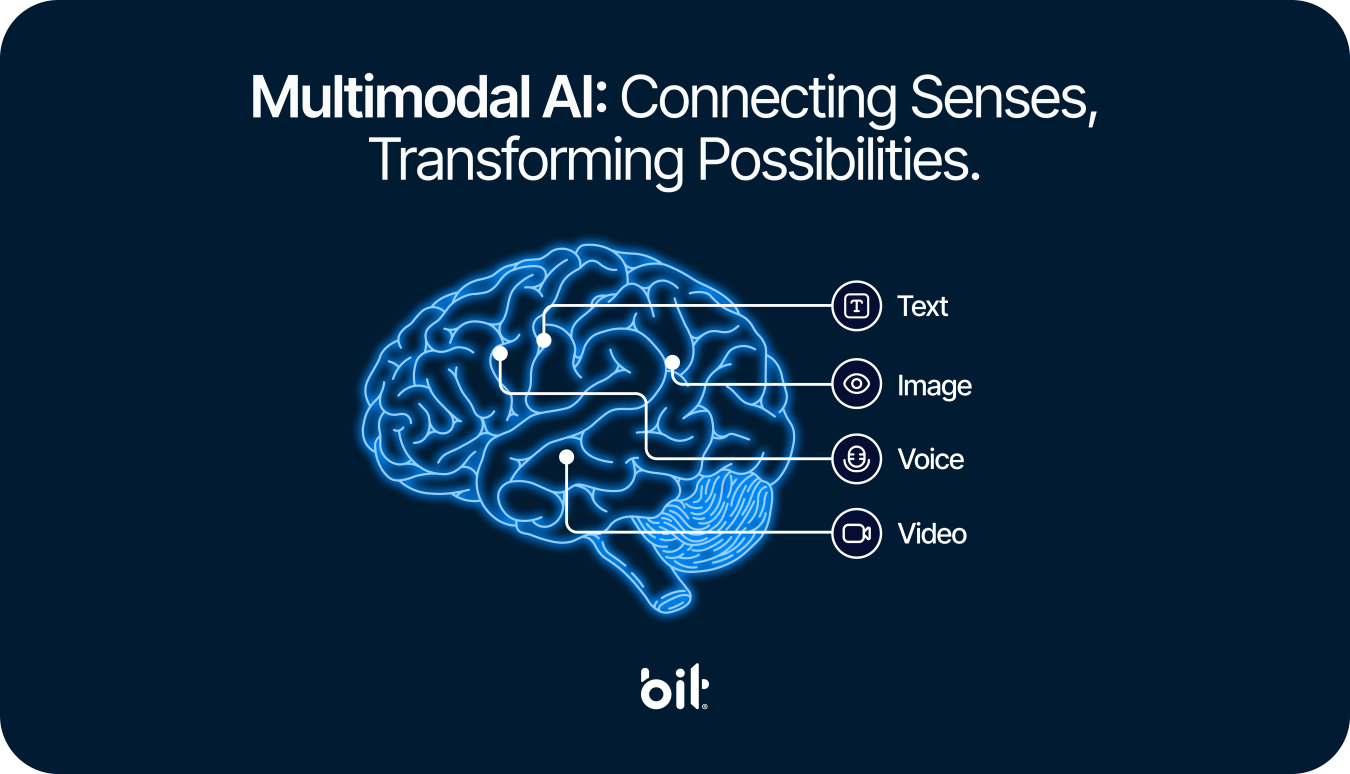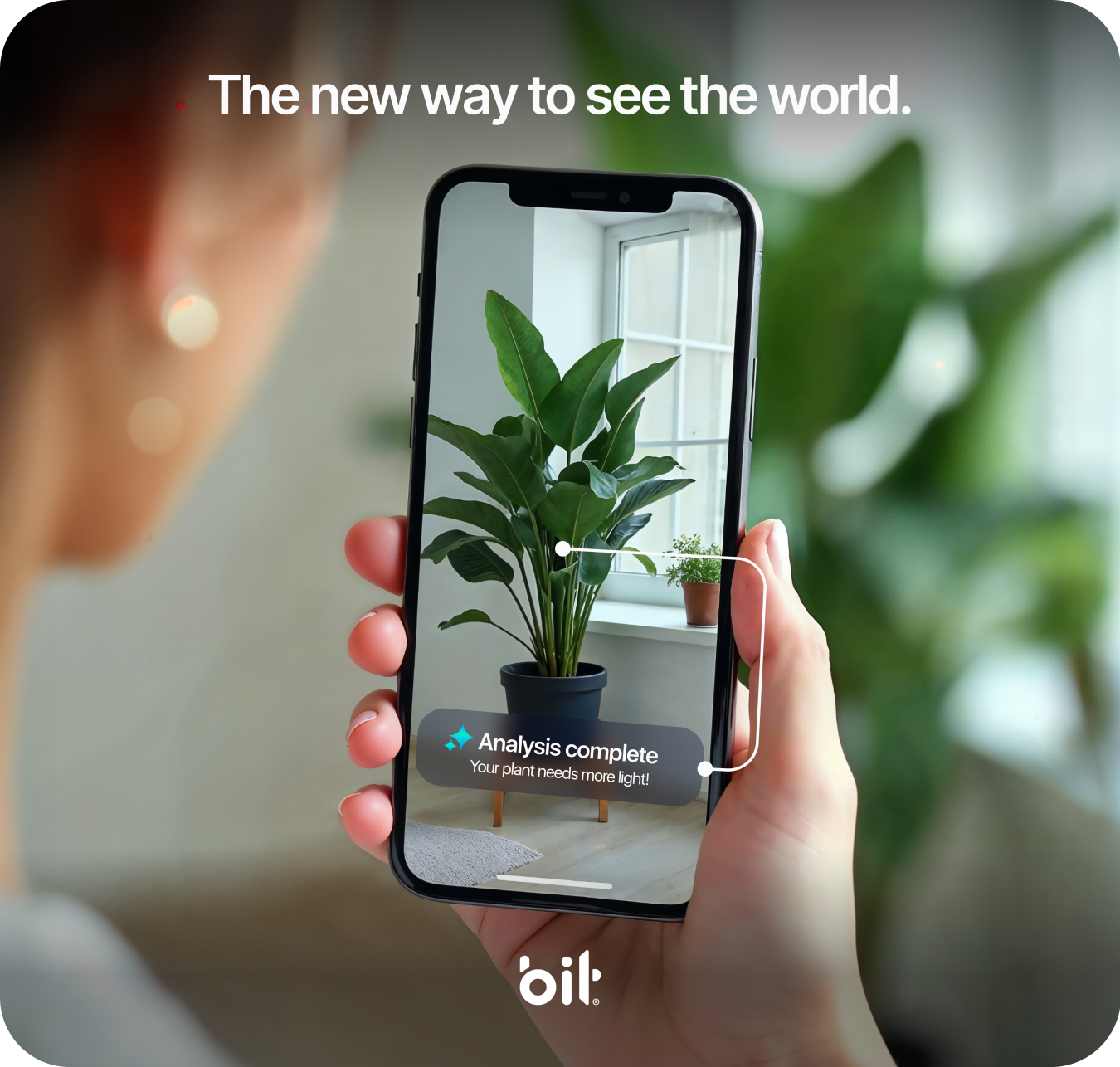- Blog
-
>
Let’s Innovate
Together.
Let’s Innovate
Together.
- Contact Us
Multimodal AI: The Key to More Human Digital Experiences

BIT Editorial Team

Discover how multimodal AI is transforming digital experiences by integrating text, image, voice, and data for more human-centered interactions. This article explains how it works, explores business use cases, and outlines how to implement it strategically to evolve from functional tools to intelligent allies—driving sustainable competitive advantages.
The conversation around Artificial Intelligence has been dominated by chatbots and assistants that understand and generate text. They are powerful tools, undoubtedly, but they represent only one facet of a much deeper revolution. Today, the frontier of innovation is expanding towards multimodal AI—a technology that not only understands words but also sees, listens, and contextualizes, creating digital interactions that, for the first time, feel genuinely human.
For businesses, this is not just a technical upgrade; it's a strategic opportunity to redefine their relationship with customers and optimize their operations in ways that were previously unthinkable.
What Exactly is Multimodal AI?
Imagine how a human understands the world. We don't just read a text; we see the speaker's facial expression, hear their tone of voice, and observe the environment. Multimodal AI operates on a similar principle. Instead of processing a single type of information (unimodal), models like Google's Gemini or OpenAI's GPT-4o are designed to interpret and combine different "modalities" of data—text, images, audio, and video—simultaneously.
According to an article in the Harvard Business Review, the ability to process multiple inputs at once allows AI to gain a much richer and more contextual understanding of any situation. It's no longer just about answering a question, but about understanding the intent, sentiment, and context behind it.
From Functional Efficiency to Emotional Connection
The true value of multimodal AI lies not in performing the same tasks faster, but in enabling entirely new experiences. While conventional AI is excellent for optimizing business tasks through smart automation, multimodal AI enriches interactions.
Let's consider e-commerce. A customer could upload a photo of an item of clothing they saw on the street and ask via voice query, "Do you have something similar that would go with these shoes?", while showing a second image. A multimodal system can analyze both images, understand the voice query, and offer product recommendations that not only match visually but also align with current trends extracted from fashion articles (text). This level of personalized service was, until now, exclusive to human interaction. As we've seen in the AI revolution in business management, the goal is not to replace, but to empower.
The Leap Towards Predictive Intelligence
This is where multimodal AI becomes a strategic ally. By holistically understanding context, these systems can begin to anticipate needs. A report by McKinsey & Company on the future of customer experiences highlights that the next step is "proactive hyper-personalization."
In the retail sector: A system could analyze purchase history (data), product reviews the customer has viewed (text and images), and even voice queries made to the store's assistant to predict which products will interest them next week and send a personalized offer before the customer even starts looking.
In manufacturing: An AI could "see" the wear on a part through video cameras, "hear" a subtle change in the machine's sound, and cross-reference that information with technical manuals (text) to predict an imminent failure and schedule maintenance, preventing production stoppages. This evolution in asset management reminds us of the importance of robust cybersecurity in the digital age, protecting both data and physical operations.
As an MIT paper points out, the fusion of sensory and textual data not only improves accuracy but also enables predictive capabilities that were once science fiction. Understanding the difference between generative vs. predictive AI is key to harnessing this power for your business strategy.
The Future is Now: How Can Your Company Get Started?
Integrating multimodal AI doesn't mean discarding your current systems. It's a strategic evolution that begins with a key question: where could a deeper, more human understanding of our customers and operations generate the most value?
The answer might be in enhancing your customer service, creating more intuitive digital products, or optimizing your supply chain. The key is to think of AI not as a task-based tool, but as an intelligent partner. An article in Forbes emphasizes that the companies that will lead tomorrow are those investing today in technologies that foster "connected experiences."
At BIT Technologies, we believe that technology should help people live their best experience. Multimodal AI is the bridge to that future: more connected, more intuitive, and more human.
The transition to more advanced artificial intelligence can seem like a monumental challenge. But you don't have to do it alone.
At BIT Technologies, through our Discover IT consulting service, we work with you to analyze your processes, identify strategic opportunities, and design and implement custom-built tech solutions that truly transform your business.
Whether you're looking to revolutionize the experience in your educational institution, the management of your condominiums, or any other sector, our purpose is the same: to innovate with technology to help you and your customers live the best experience.
Want to explore how advanced AI can become your greatest differentiator?
Contact us today and let's talk about your project.




